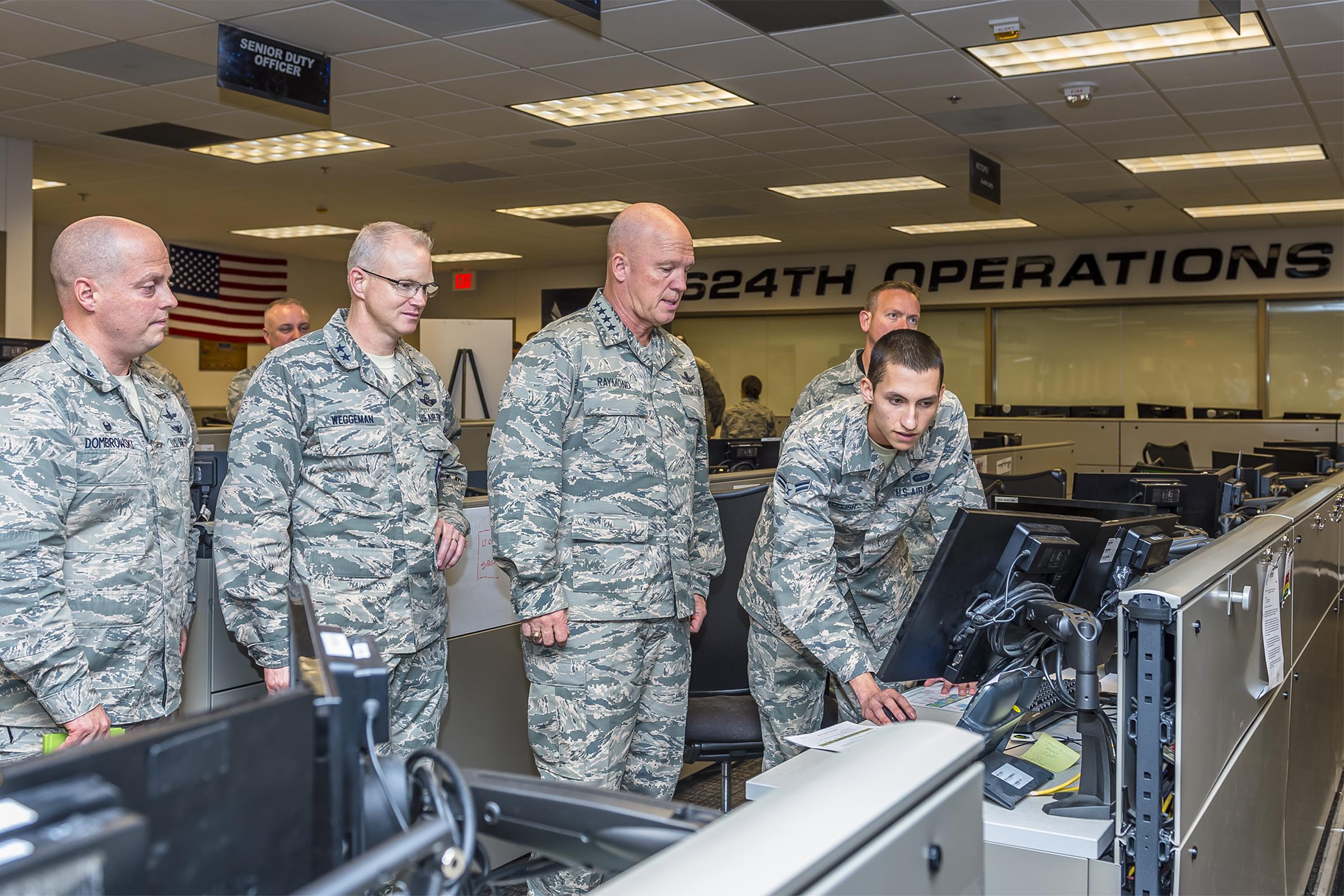
The Air Force is seriously considering merging 24th and 25th Air Forces in an effort to better integrate the service’s cyber and ISR capabilities. Here, A1C Ryan McClish, with the 624th Operations Center, briefs Air Force Space Command boss Gen. Jay Raymond, as 24th Air Force Commander Maj. Gen. Christopher Weggeman and Col. Michael Dombrowski, 624th Operations Center commander, observe. Air Force photo by Lt. Col. Cade Sonnichsen.
The Air Force will almost certainly push together its cyber-focused 24th Air Force with its ISR-focused 25th Air Force, according to the commander of 24 AF.
The 24th Air Force—also called Air Forces Cyber—fulfills the Air Force’s component of US Cyber Command. It was stood up in 2009 under Air Force Space Command and is focused mainly on creating cyber warriors and cyber capabilities, as well as maintaining and operating them in blue and red space, offensively and defensively. It often relies on information gleaned by the 25 AF, whose operation mainly focuses on electronic warfare and intelligence, surveillance, and reconnaissance.
“Right now we’ve got stovepiped capabilities, which should be integrated to be more effective,” said Maj. Gen. Christopher Weggeman, the commander of 24th AF. “I think we’re 99 percent decided, according to [AFSPC Commander Gen. Jay Raymond].” During the 2017 Air, Space & Cyber Conference, USAF’s Chief of Staff Gen. David Goldfein said the upcoming Corona meeting will include discussions about the current and future cyber construct, which may result in an announcement regarding the integration.
Weggeman argued that bringing the disparate capabilities under one commander is the “the right thing to do.”
“That will give the Air Force some special sauce and increased capability,” he told Air Force Magazine, adding his “moniker” for the new group would be “Information Warfare NAF,” perhaps emulating the Navy’s Information Warfare community.
The move would align with Goldfein’s third main focus area in the coming year: improving multi-domain command and control.
“We’re not doing the multi-domain integration we need to be doing at the level we need to be doing it right now,” Weggeman explained. “It’s difficult to integrate the seam between us right now.” Calling the integration a “powerful construct” for the service, Weggeman said it’d be a “long slog” starting in FY18 and it would take “a couple years to conclude.”
Additionally, the integration of the two NAFs may assuage some of the pressure AFSPC is currently facing to focus more on space. Congress is currently mulling the 2018 National Defense Authorization, in which the House version tasks USAF to create a Space Corps by January 2019.
Top DOD leadership has been united in opposing the separate service. On Oct. 17, Secretary of Defense Jim Mattis addressed his space concerns in an annual letter to the chairmen and ranking members of the House and Senate Armed Services Committees.
“I oppose the creation of a new military service and additional organizational layers at a time when we are focused on reducing overhead and integrating joint warfighting functions,” Mattis wrote. Air Force leadership has also been vocal in opposing the space corps.
The DNA of lethality is comprised of information, decision-making, and utilizing capability to have an effect, Weggeman explained, adding “the alchemy there will increase our wartime lethality as a service.”